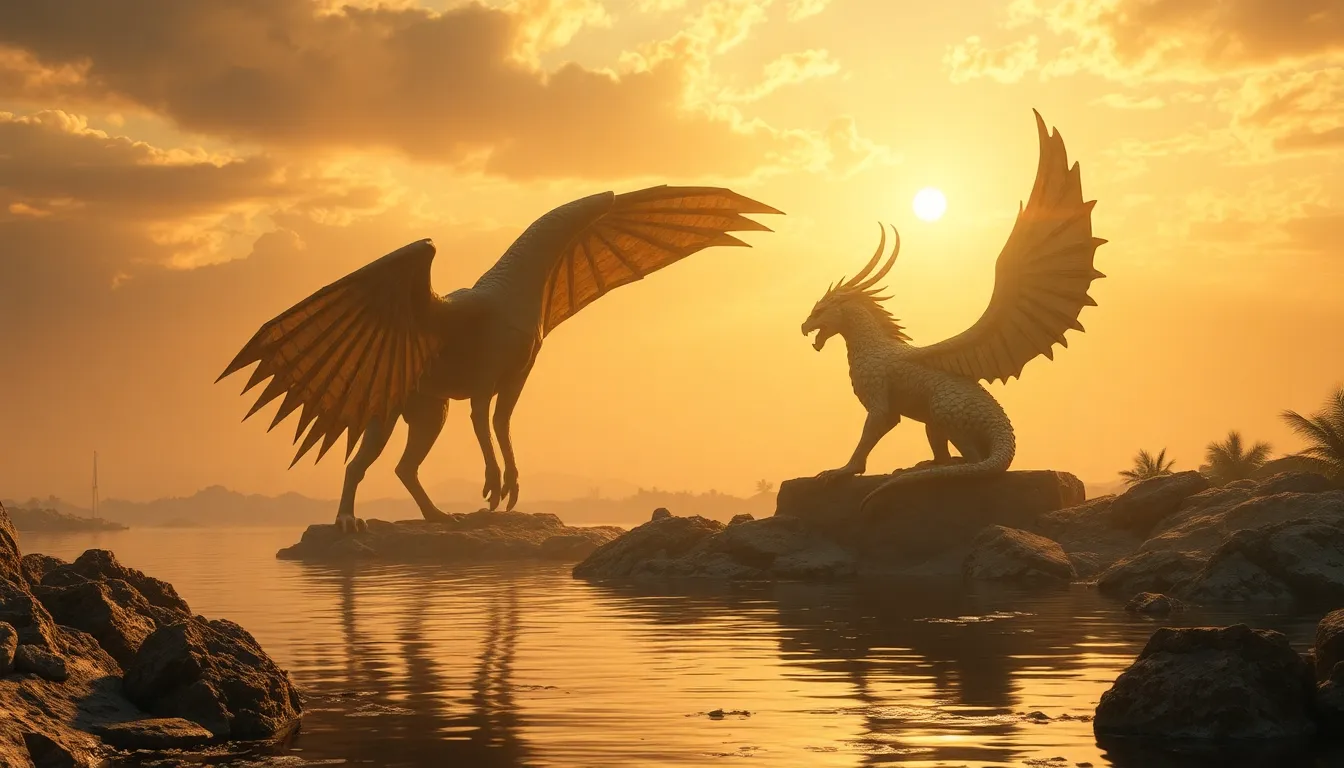The Nile: A Source of Mythical Creatures
Introduction: The Enigmatic Nile
The Nile River, often referred to as the lifeblood of Egypt, has been a fundamental part of human civilization for thousands of years. Stretching over 6,650 kilometers, it is not only the longest river in the world but also a source of sustenance, transportation, and inspiration for countless cultures. In ancient Egypt, the Nile was revered as a divine entity, embodying the essence of life itself. Alongside its physical importance, the river has been a rich source of mythology, birthing numerous tales of mythical creatures that continue to captivate our imaginations today.
Historical Context: The Nile in Ancient Civilizations
The significance of the Nile in the development of Egyptian civilization cannot be overstated. This great river provided fertile soil through its annual floods, which allowed agriculture to flourish. Settlements and cities grew along its banks, ultimately leading to the rise of one of the most remarkable civilizations in history.
In Egyptian mythology, the Nile was personified by the god Hapi, who represented the fertility of the land and the bounty of the harvest. The river’s annual inundation was celebrated through festivals and rituals, emphasizing its cultural and spiritual importance. The tales spun around the Nile were not merely stories; they were integral to the identity of the people, shaping their beliefs and practices.
The Nile and Its Ecosystem: A Breeding Ground for Legends
The Nile’s ecosystem is a tapestry of diverse wildlife and unique habitats, ranging from lush wetlands to arid deserts. This rich biodiversity has fostered an environment ripe for legends and myths. The river is home to creatures such as:
- Crocodiles: Revered and feared, they were associated with the god Sobek.
- Hippos: Often depicted in art, they symbolized chaos and danger.
- Birds: Various species, including the sacred Ibis, played significant roles in mythology.
These animals, along with the river itself, inspired tales of mythical beings and creatures, blurring the lines between reality and imagination. The lush landscapes of the Nile provided the perfect backdrop for stories that would endure for centuries.
Famous Mythical Creatures of the Nile
Among the most notable mythical creatures associated with the Nile are:
- The Bennu Bird: Often linked to the sun god Ra, this bird symbolizes rebirth and renewal, reminiscent of the phoenix in other cultures.
- Serpopard: A fantastic creature with the body of a leopard and a long neck resembling that of a serpent. It is often thought to represent the duality of life and death.
Additionally, various regional legends from Nubia and Sudan further enrich the tapestry of Nile mythology. These tales often reflect local beliefs and customs, showcasing the diversity of the cultures that have thrived along the river.
The Nile in Literature and Art
Mythical creatures of the Nile have been vividly portrayed in ancient texts and artworks, allowing us to glimpse the minds of those who lived in awe of the river. Hieroglyphics, temple carvings, and pottery often featured these fantastical beings, serving both decorative and narrative purposes.
Prominent works, such as the Pyramid Texts and the Coffin Texts, reference the mythical creatures and their significance in the afterlife. The imagery associated with these myths has influenced countless artists and writers throughout history, leading to a legacy that extends beyond the ancient world.
Modern Interpretations and Adaptations
Today, the fascination with Nile-based myths continues in contemporary culture. Films, books, and video games frequently draw inspiration from these ancient stories, reimagining the mythical creatures of the Nile for new audiences. Popular adaptations include:
- Movies: Films like The Mummy and Gods of Egypt feature elements of Nile mythology, blending action with ancient lore.
- Literature: Novels such as The Egyptian by Mika Waltari explore the lives and beliefs of ancient Egyptians, often referencing their mythical creatures.
- Video Games: Games like Assassin’s Creed: Origins allow players to explore the rich history and mythology of ancient Egypt, including its legendary beings.
The adaptability of these myths highlights their enduring appeal and relevance in a rapidly changing world.
The Nile Today: Conservation and the Preservation of Myths
As modernity encroaches upon the Nile, environmental changes threaten its ecosystem and the myths tied to it. Pollution, climate change, and dam constructions have altered the river’s natural flow, impacting wildlife and the communities that rely on it.
Efforts are underway to conserve the Nile and preserve its cultural and mythical heritage. Initiatives include:
- Environmental protection: Organizations are working to reduce pollution and protect wildlife habitats along the river.
- Cultural education: Programs aim to educate younger generations about the significance of the Nile’s myths and their role in cultural identity.
These efforts are crucial in maintaining the connection between the river’s physical presence and the rich tapestry of stories that have emerged from it.
Conclusion: The Enduring Legacy of the Nile’s Mythical Creatures
The Nile River remains a powerful symbol of life, creativity, and imagination. Its mythical creatures are not merely relics of the past; they continue to shape our understanding of human culture and identity. As we reflect on the significance of the Nile, we recognize that these myths offer insights into the values and beliefs of ancient civilizations, as well as the ongoing relevance of nature in our lives.
In an age where modern advancements often overshadow natural wonders, the stories of the Nile’s mythical creatures remind us of the importance of preserving both our cultural heritage and the environments that inspire them.




